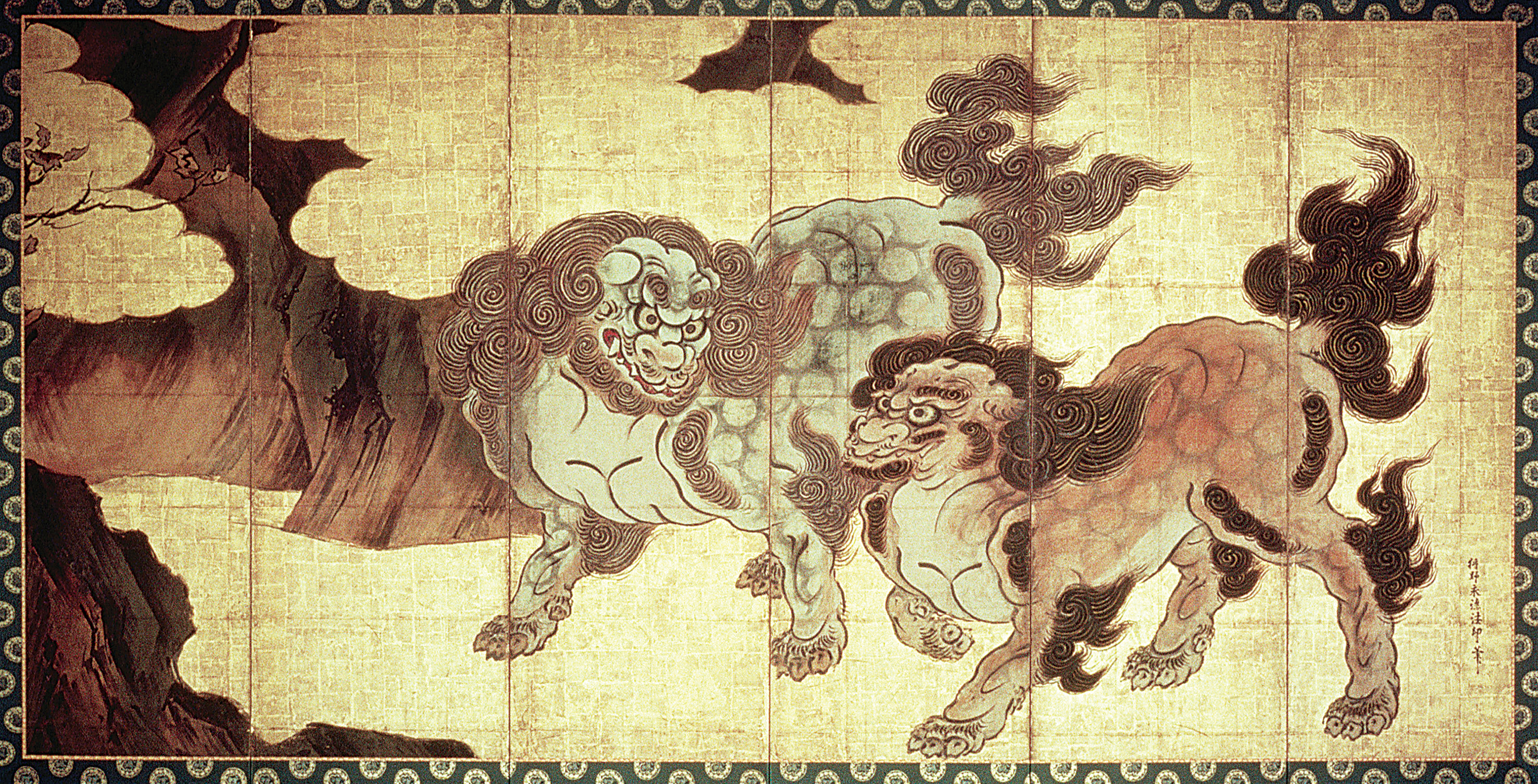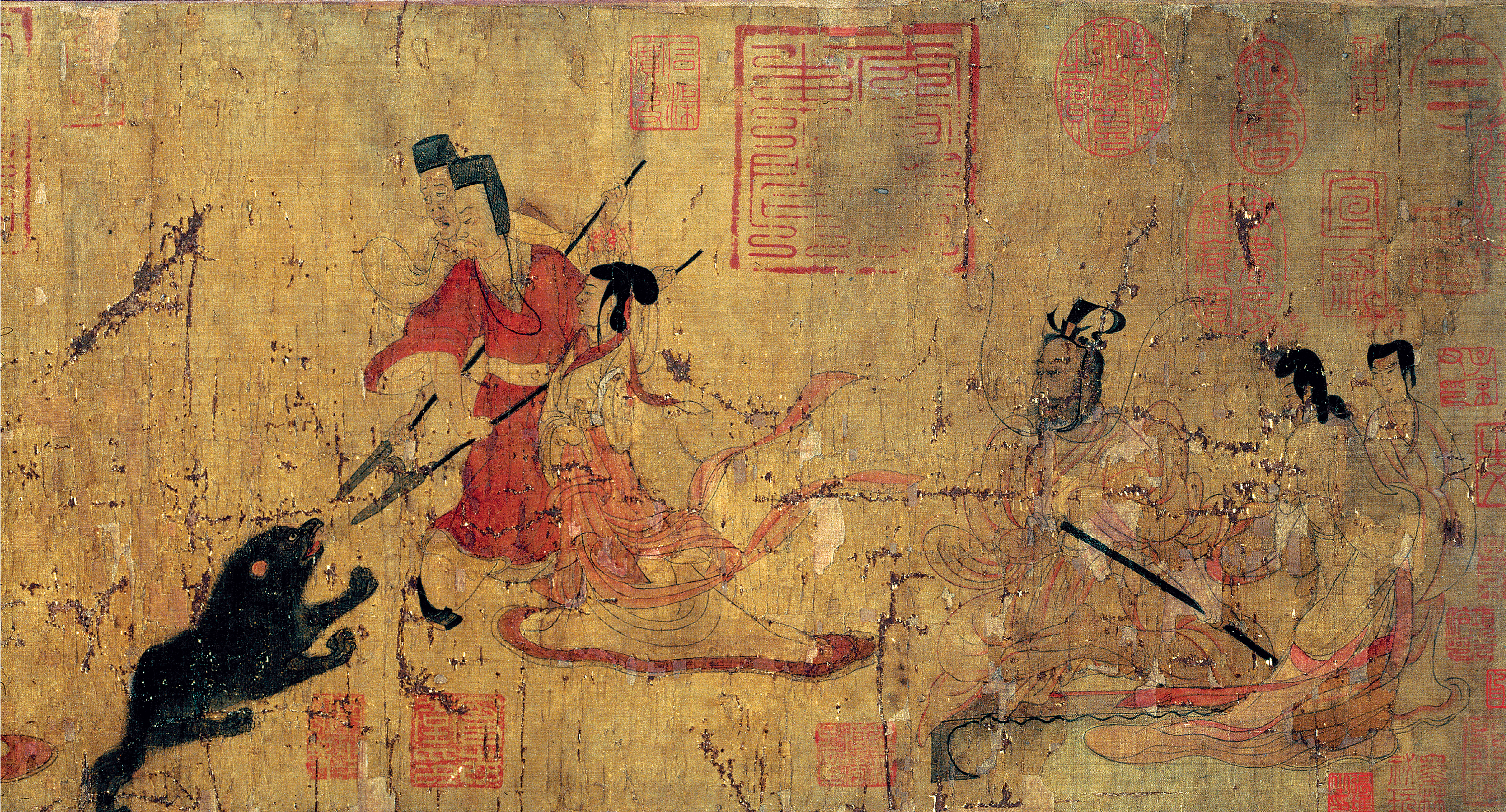9 ¾ X Chinese And Japanese Art
I will provide one of Chinese art and Japanese art.
please see two kinds of art, and follow below directions.
At the top of each paper include a digital image and clearly identify the work of art by: Title, artist (if known), date, material, dimensions, and where it is now located.
In the body of your paper compare these two works of art with regard to: form, style, meaning, and historical or cultural context. Hint: for a meaningful paper choose works that have something in common, such as the same or similar subject matter, or medium; sculpture with sculpture, architecture with architecture, painting with painting etc. Discuss how while they may be similar (such as images of the Buddha, or narratives) yet they are different. Explain what accounts for the differences. Why do artists/architects make the choices they do?
Japan’s Art
Chinese Lions
Chinese Lions: Six-panel screen, ink, colors, and gold-leaf on paper, 7’4″ x 14’10”
found in Kyoto, Japan
Momoyama period
1573 CE – 1615 CE
Your eBook, Kleiner Art Through the Ages, 15th edition, describes the image as follows. ” Appearing in both religious and secular contexts, lions were associated with power and bravery. Indeed, Chinese lions became an important symbolic motif during the Momoyama period. In Eitoku’s painting, the colorful beasts’ powerfully muscled bodies, defined and flattened by the characteristic Kano School heavy black outlines, stride forward in a schematic landscape of brown rocks and gold clouds. The dramatic effect of this work derives in part from its scale—it is more than 7 feet tall and nearly 15 feet long. “
In Japan, as the work of professional painters was highly demanded by wealthy patrons from the Imperial court, to the Kyoto nobility, to the Shogun and the samurai (warrior) class, and to members of the merchant class, styles and techniques were passed down from father to son as a family enterprise. One of the most important and successful of these families of artists was the Kano family, whose traditions were formed in the late Muromachi Period by the “father” of what came to be known as the “Kano School”, Kano Motonobu. Kano Eitoku, a descendent of Motonobu, became the most sought- after and successful profession artist of his day, patronized by the powerful leaders of the warrior class, such as Oda Nobunagaand Toyotomi Hideyoshi in the Momoyama Period, the late 16thCentury.
Form
6-panel standing, folding screen. This format represents a large piece of furniture that was used in Japanese rooms as décor and to create areas of focus, or privacy. The folding-screen form comes, like many cultural objects, from China. Folding screens can have as few as two panels, and as many as eight, although 6 seems to be the most common, and often come as a pair; they are designed to stand on their own in a zig-zag fashion, and are never meant to be displayed flattened out as we see in museums, modern buildings, and study images.
What are some advantages of the format for painters?
Style
Kano School Style has its origins in Chinese ink-painting which is seen in the use of bold black outlines and washes to delineate all forms. Kano School paintings may be completely monochrome, or highly colorful. The colors, when used, are like those used in the Heian: thick opaque mineral colors. In addition, the Kano School developed the use of thin gold leaf squares attached to the surface of the paper ground, which creates an opulent effect and serves the practical purpose of reflecting light in dark interiors. The gold ground also serves to define large areas, which can be “read” as clouds, mist, or even sold ground. Overall the effect, a combination of flatness and 3-dimensionality, is grand and dynamic, suitable for expressions of wealth and power. The lions are more symbolic than realistic and are based on the artist’s imagination. Compare with Hasegawa Tohaku’s Pine Forest (text illustration 34-7)
Meaning
The lions, powerful animals, reflect the status and power of the samurai.
Context
Responding to the needs of the time for samurai leaders, like the large castles (see Himeji Castle, 34-5) built by feudal lords, paintings become symbols of power meant to impress others with opulence and power; costly materials available only to wealthy patrons. Painted as a gift – valuable item of exchange. Samurais have certain aesthetic tastes quite different from the court nobility
Chinese’s Art
Lady Feng and the Bear
Lady Feng and the Bear: Handscroll, ink and colors on silk, 9 ¾″ x 11′ ½″
found in Loyang(Luoyang), western Henan Province
Period of Disunity
220 CE- 581 CE
Your eBook, Kleiner Art Through the Ages, 15th edition, describes the image as follows. “China has a long and rich history of scholarship on painting, preserved today in copies of texts from as far back as the fourth century and in citations to even earlier sources. Few of the first texts on painting survive, but later authors often quoted them, preserving parts of some important works for posterity. Thus, educated Chinese painters and their clients could steep themselves in a rich art historical tradition. Perhaps the most famous subject of later commentary is the set of six “canons” (laws) of painting that the art critic and painter Xie He (active ca. 500–530) formulated in the early sixth century. The canons, as translated by James Cahill, are as follows:
- Engender a sense of movement through spirit consonance.
- Use the brush with the bone method.
- Responding to things, depict their forms.
- According to kind, describe appearances [with color].
- Dividing and planning, positioning and arranging.
- Transmitting and conveying earlier models through copying and transcribing. *
Xie employed only four characters for each of these succinct and cryptic laws. Several variant translations have been proposed, and scholars actively debate the precise meaning of each canon. Interpreting the canons in connection with extant paintings is often difficult, but nonetheless offers valuable insights into what the Chinese of Xie’s day and later valued in painting.”
This horizontal scroll painting has been traditionally attributed to the historically renown, early Chinese painter, Gu Kaizhi. It depicts a text written to instruct ladies in how to behave in their role as wives and concubines of the Emperor. Although it is likely a copy of two-three hundred years later, it is thought to faithfully represent Gu’s style and manner of painting.
Gu Kaizhi
Form
A handscroll – a unique Chinese format, a long, horizontal strip of silk (or, paper) that is unrolled from right to left, following the way the Chinese language is written, from right to left. The form allows the artist to create discrete scenes, one after the other, with some break between them, or to create a continuously unfolding composition that shares space. The act of unrolling to view creates an early form of time-based art.
Style
Gu’s style is mainly seen in his figure painting: long, willowy, narrow female bodies, covered in heavy layers of robes that trail on the ground around them, and diaphanous belts or scarves that are lifted in the air by the slightest movement. Elongated, narrow faces squared off at the forehead by their hair and rounded at the chin. The style is essentially linear, with the forms indicated by fine black outlines, then filled in with translucent colors. Space is not well defined; there is no “ground line;” space is indicated by position and overlap. How else is the solid ground implied?
Meaning
The painting consists of a series of short textual passages followed by Gu’s illustration of what that might look like in action, or how it was exemplified in the past.
Context
The inherent meaning is related to Confucian ideas of social duty, proper comportment, and formality among people. Confucius felt art’s role was to instruct.


